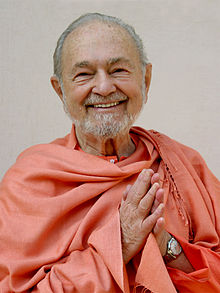
Paramahansa Yogananda was an Indian Hindu monk, yogi and guru who introduced millions to meditation and Kriya Yoga through his organization, Self-Realization Fellowship (SRF) / Yogoda Satsanga Society (YSS) of India – the only one he created to disseminate his teachings. A chief disciple of the yoga guru Swami Sri Yukteswar Giri, he was sent by his lineage to spread the teachings of yoga to the West. He immigrated to America at the age of 27 to prove the unity between Eastern and Western religions and to preach a balance between Western material growth and Indian spirituality. His long-standing influence in the American yoga movement, and especially the yoga culture of Los Angeles, led him to be considered by yoga experts as the "Father of Yoga in the West". He lived his last 32 years in America.
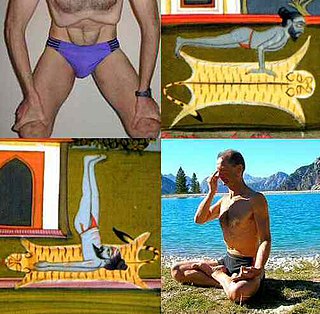
Hatha yoga is a branch of yoga that uses physical techniques to try to preserve and channel vital force or energy. The Sanskrit word हठ haṭha literally means "force", alluding to a system of physical techniques. Some hatha yoga style techniques can be traced back at least to the 1st-century CE, in texts such as the Hindu Sanskrit epics and Buddhism's Pali canon. The oldest dated text so far found to describe hatha yoga, the 11th-century Amṛtasiddhi, comes from a tantric Buddhist milieu. The oldest texts to use the terminology of hatha are also Vajrayana Buddhist. Hindu hatha yoga texts appear from the 11th century onward.
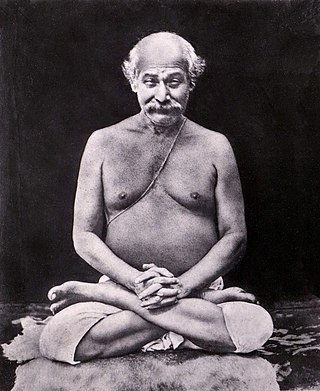
Shyama Charan Lahiri, best known as Lahiri Mahasaya, was an Indian yogi guru who founded the Kriya Yoga school. In 1861, his master, Mahavatar Babaji appeared to him, empowering him to revive the yogic science of Kriya Yoga and teach it to the public. He was unusual among Indian holy people in that he was a householder, marrying, raising a family, and working as a government accountant, an "Ideal yogi-householder." He became known in the West through Paramahansa Yogananda, a disciple of Sri Yukteswar Giri, and through Yogananda's 1946 book Autobiography of a Yogi, considering him a Yogavatar, or "Incarnation of Yoga," since Lahiri himself was chosen by the yogic masters to disseminate the principles of yoga to the world.

Self-Realization Fellowship (SRF) is a worldwide, spiritual organization founded by Paramahansa Yogananda in 1920. Before coming to the United States, Yogananda began his spiritual work in India in 1917 and named it Yogoda Satsanga Society of India (YSS). He founded SRF in 1920 and in 1925 the Mount Washington property became the international headquarters for SRF and YSS, located in Los Angeles, California. Before his return visit to India in 1935, he legally incorporated SRF in the United States as a non-profit religious organization. He only created SRF as the organization to carry on his work - to care for and disseminate his teachings.

Kriya Yoga is described by its practitioners as an ancient yoga system revived in modern times by Lahiri Mahasaya, who claimed to be initiated by a guru, Mahavatar Babaji, circa 1861 in the Himalayas. Kriya Yoga was brought to international awareness by Paramahansa Yogananda's book Autobiography of a Yogi and through Yogananda's introductions of the practice to the west from 1920.

Autobiography of a Yogi is an autobiography of Paramahansa Yogananda published in 1946.

Kriyananda was an American Hindu religious leader, yoga guru, meditation teacher, musician, and author. He was a direct disciple of Paramahansa Yogananda and founder of the spiritual movement named "Ananda". He authored over 150 books and composed about 400 pieces of music. In 1998, he was found guilty of "constructive fraud", with a finding of "malice" and "fraudulent conduct" in a sexual harassment lawsuit.

Daya Mata, born Rachel Faye Wright, was the third president and religious leader of Self-Realization Fellowship/Yogoda Satsanga Society of India (SRF/YSS). SRF/YSS is the only spiritual organization founded by her guru, Paramahansa Yogananda, to disseminate his teachings. She was president of SRF/YSS for over 55 years until her death in 2010.
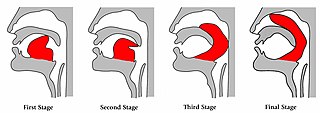
Khecarī mudrā is a hatha yoga practice carried out by curling the tip of the tongue back into the mouth until it reaches above the soft palate and into the nasal cavity. The tongue is made long enough to do this with many months of daily tongue stretching and, in some versions of the practice, by gradually severing the lingual frenulum with a sharp implement over a period of months.

Yogoda Satsanga Society of India (YSS) is a non-profit, nonsectarian spiritual organization founded by Paramahansa Yogananda in 1917 and is a part of the Self-Realization Fellowship which was founded in 1920 to care for and disseminate his teachings. The current president of the SRF/YSS is Brother Chidananda. Paramahansa Yogananda is most noted for his 1946 book Autobiography of a Yogi which became an international bestseller and featured in the 100 Most Important Spiritual Books of the 20th Century by HarperCollins.

Mrinalini Mata was the fourth president of Self-Realization Fellowship / Yogoda Satsanga Society of India (SRF/YSS), the only church founded by Paramahansa Yogananda to care for and disseminate his teachings.

Rajarsi Janakananda, born James Jesse Lynn was the leading disciple of the yogi Paramahansa Yogananda and a prominent businessman in the Kansas City, Missouri area. A self-made millionaire when he met Yogananda in 1932, he later left a total endowment of approximately six million dollars to Yogananda's organization, Self-Realization Fellowship(SRF)/Yogoda Satsanga Society of India(YSS), helping ensure its long-term success. Yogananda also chose Janakananda to succeed him as president of SRF/YSS. Janakananda was second president of SRF/YSS from 1952 until 1955.

Dhanurasana is a back bending asana in hatha yoga and modern yoga as exercise.
Dihika is a neighbourhood in Asansol of Paschim Bardhaman district in the Indian state of West Bengal. It is governed by Asansol Municipal Corporation

World Brotherhood Colonies are an idea for self-sustaining spiritual communities envisioned by Paramahansa Yogananda, the Indian yogi who authored Autobiography of a Yogi and founded Self-Realization Fellowship / Yogoda Satsanga Society of India. Yogananda envisioned that communities for "plain living and high thinking," would develop as a natural culmination of the spread of his worldwide teachings. Yogananda established a World Brotherhood Colony at his Self-Realization Fellowship Encinitas center in Southern California, as a model for these colonies. However he found that organizing spiritual communities for families along the lines he envisioned would take much more time than he then had available. Self-sustaining SRF communities for families will come into being in the future when the time is right. Yogananda abandoned his dream of founding a world-brotherhood colony in Encinitas and turned his mind to organizing the existing communities along more strictly monastic lines.
This is a bibliography of the works of Paramahansa Yogananda, published by his worldwide spiritual organization Self-Realization Fellowship/Yogoda Satsanga Society of India. He began his spiritual work in India in 1917 and named it Yogoda Satsanga Society of India. When he came to the United States in 1920, he founded Self-Realization Fellowship. Today the international headquarters of Self-Realization Fellowship/Yogoda Satsanga Society of India is in Los Angeles, California.
Brother Chidananda is the fifth president of Self-Realization Fellowship/Yogoda Satsanga Society of India (SRF/YSS). SRF/YSS is the only church founded by Chidananda's guru, Paramahansa Yogananda, to disseminate his teachings. Chidananda was born in Annapolis, Maryland, USA.
Vajroli mudra, the Vajroli Seal, is a practice in Hatha yoga which requires the yogin to preserve his semen, either by learning not to release it, or if released by drawing it up through his urethra from the vagina of "a woman devoted to the practice of yoga".
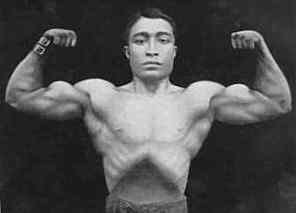
Bishnu Charan Ghosh was an Indian bodybuilder and Hathayogi. He was the younger brother of yogi Paramahansa Yogananda, who wrote the 1946 book Autobiography of a Yogi. In 1923, he founded the College of Physical Education, Calcutta. His writings influenced the development of modern yoga as exercise in India and Bikram Choudhury founded Bikram Yoga based on his teachings.
